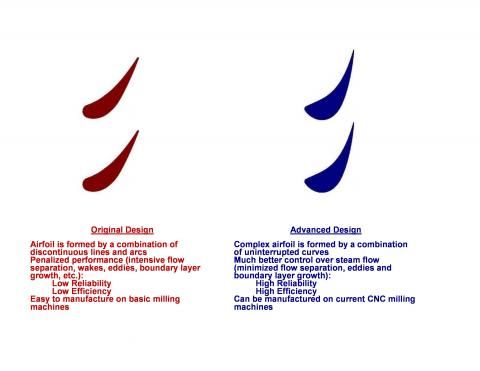Past and Current Steam Turbine Airfoils

Figure shows the comparison between the original and current airfoil designs. The old airfoils form a channel in which steam flow accelerates and turns to exit with maximum steam velocity resulting in high secondary losses.
Current airfoils form a channel in which steam flow turns first with low steam velocity and then accelerates. Low steam velocity forms a thin boundary layer resulting in low secondary losses. The current airfoil design has two other advantageous features; it is much stronger than the original design and it has improved inlet edge geometry. The latter allows for steam flow at a wider range of angles without significant separation. Using the new airfoil design yields an increase in stage efficiency of 0.5-1.0%.
(Tutorial on steam turbine airfoils will continue in subsequent weeks)